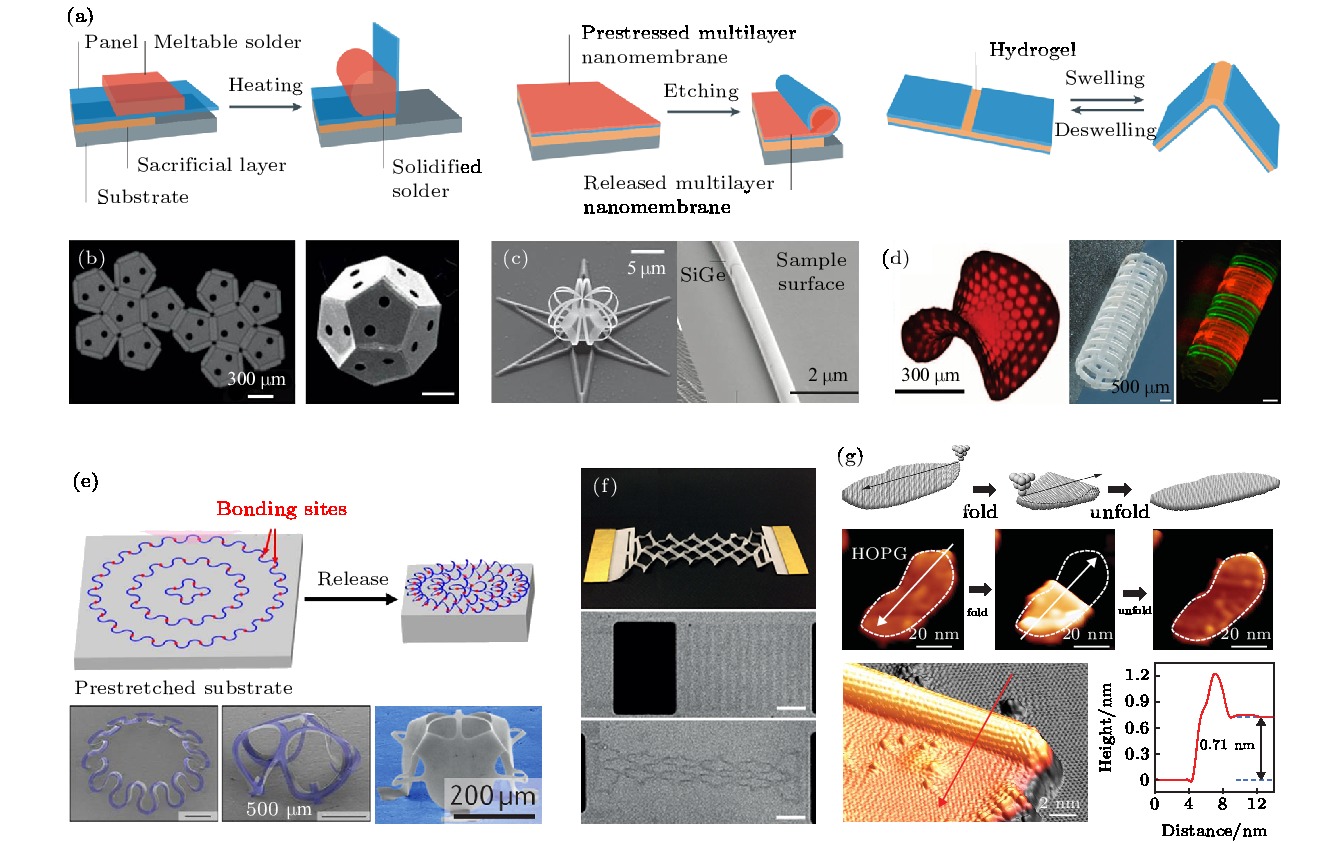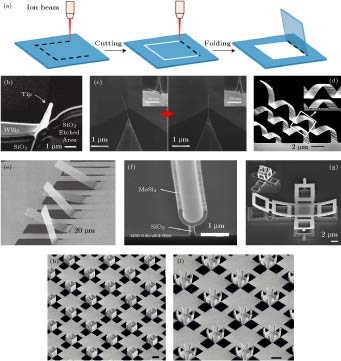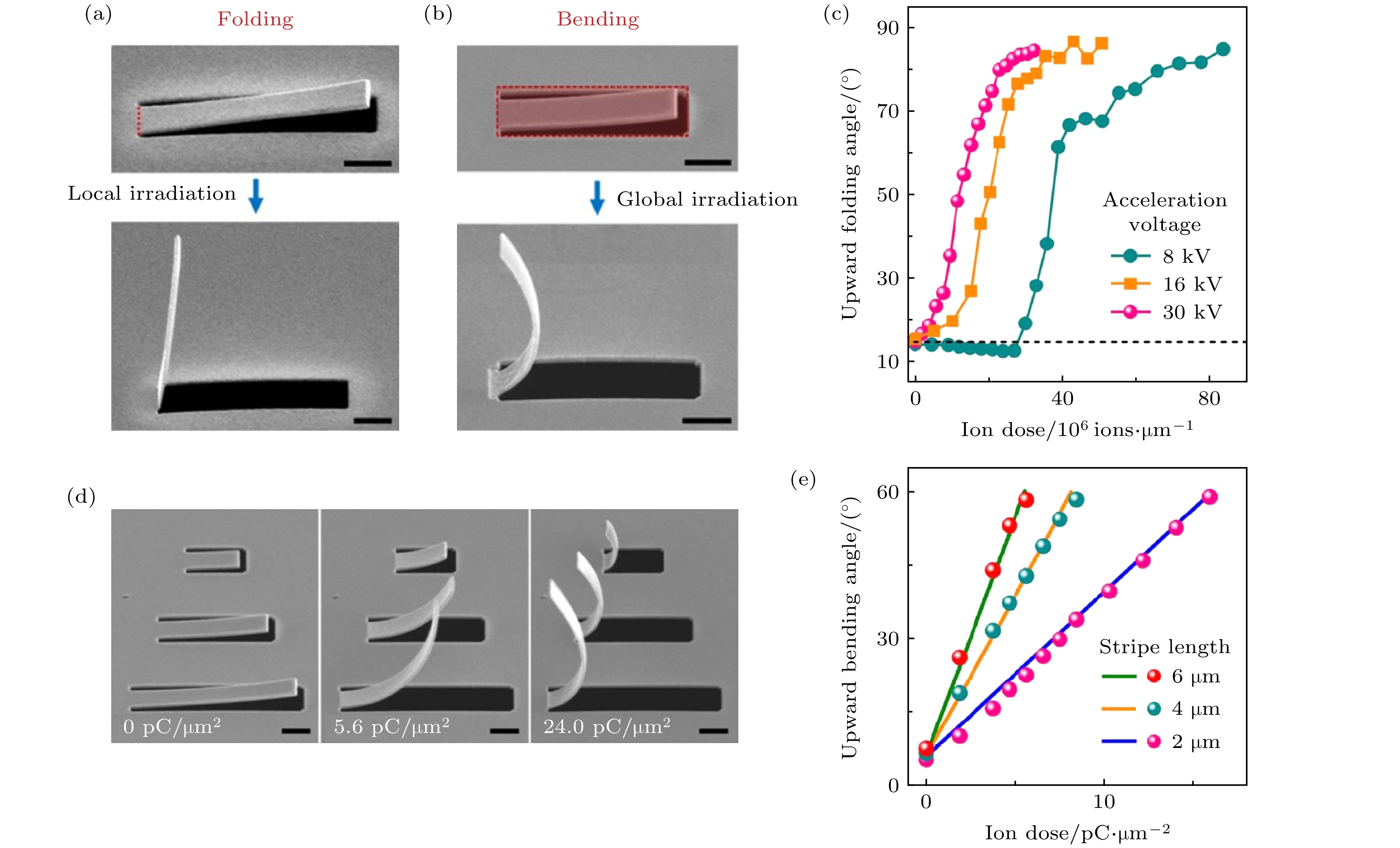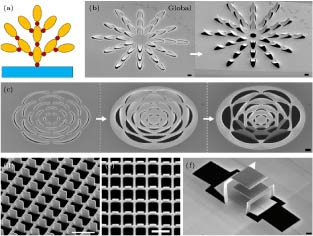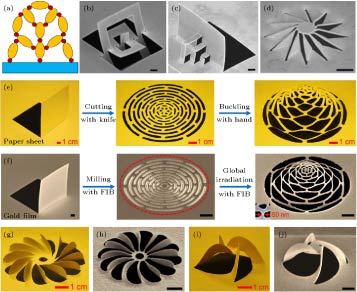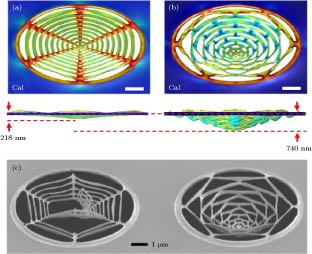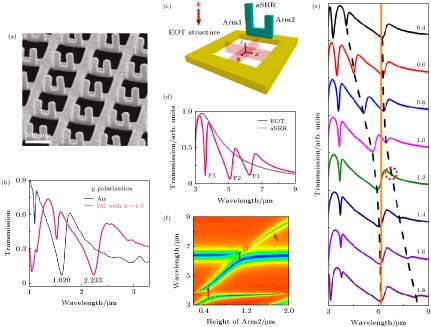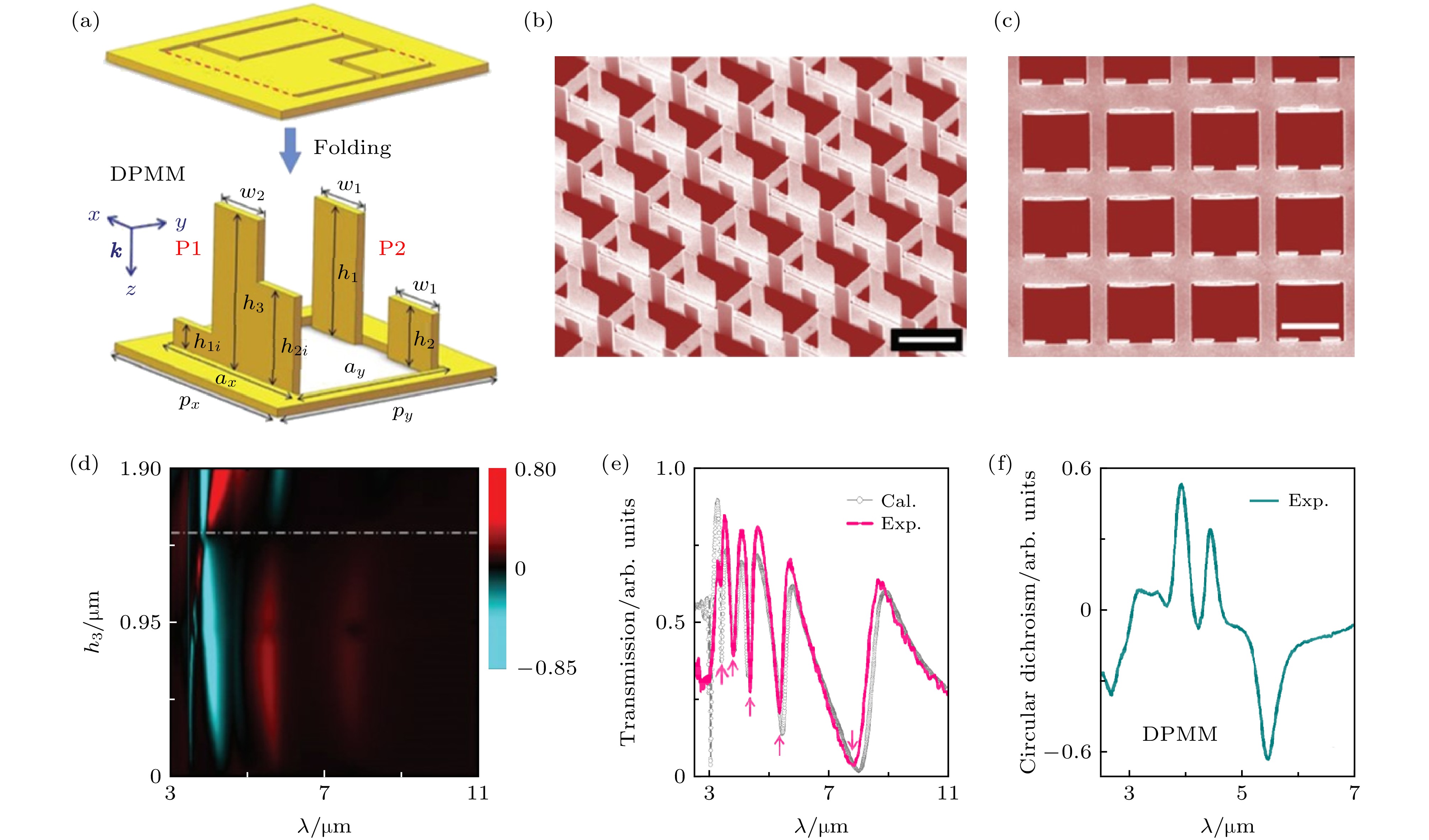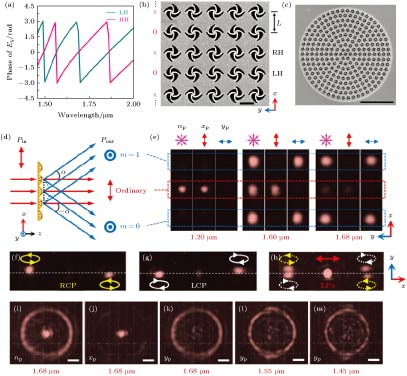High-resolution three-dimensional (3D) micro-/nano-fabrication techniques form an important basis for developing the modern micro-/nano-photonics. In this paper, we systematically introduce a new 3D micro-/nano-fabrication technique named as nano-kirigami, which is based on the focused ion beam (FIB) induced in-situ “cutting” and “folding” of a suspended gold film. The high-dose FIB milling fulfils the “cutting” process, and the low-dose FIB irradiation of the effective sample area acts as a mean of “folding”, well representing the fabrication principle of macro-kirigami. By utilizing the topography-guided stress equilibrium during FIB irradiation, nano-kirigami can reliably achieve rich 3D shape transformations, such as multi-directional folding, bending, buckling and twisting, with resolution down to below 50 nm. Taking the FIB-induced stress as a stimulus, the FIB-based nano-kirigami can be divided into “tree-type” and “closed-loop” fabrication from the perspective of topological classifications in multibody dynamics. The characteristics, advantages and disadvantages between the two different types of processes are analyzed and summarized in the paper.
The rich 3D shape deformation characteristics bring about unimaginable possibilities for the fabrication of various novel 3D structures, and the generation of new geometries facilitates the exploration of new physics. For example, by taking advantage of the 3D plasmonic conductive couplings, the composite symmetry-broken SRR-based configuration is constructed for the efficient generation of significant chiral Fano resonances. Moreover, with the close-loop nano-kirigami induced by FIB global irradiation, the giant intrinsic optical chirality is achieved in a 3D pinwheel-like structure with exotic twisting and rotation geometric features. Especially, the rotation of the linear polarization direction, caused by the circular birefringence, reaches an efficiency of 310000°/mm which exceeds the reported value of chiral metamaterial and congeneric two-dimensional planar nanostructure. Another example is the metasurface formed by alternately arranging the left-handed pinwheel structure and right-handed pinwheel structure in the horizontal plane, which can diffract cross-polarized transmitted light efficiently while clear photon spin Hall effect is observed.
The introduced nano-kirigami technique, as well as the generated exotic 3D nanostructures and their photonic applications, can build up a novel 3D miro-/nano-fabrication platform for versatile structural geometries with promising functionalities, which may find great potential applications in areas such as micro-/nano-photonics, electronic and magnetic devices, plasmonics, optomechanics, micro-/nano-electromechanical systems, etc.














 下载:
下载:
